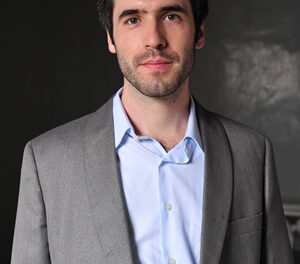Say you are a touring pianist and you want to hold an audience rapt through three big sonatas. Sonatas only, remember – no short favorites or crowd-pleasing, late 19th century knuckle busters.
What to do? Start by giving a thorough look at the program performed by Yefim Bronfman Sunday night at Duke’s Baldwin Auditorium.
The sonatas included Haydn (No. 60,) Brahms, (Op. 5, in f Minor) and Prokofiev (No. 6). Familiar names all, but consider how their works distinguish themselves.
Haydn’s is a gem of his late maturity, meant to be played in salons by talented and (for the most part) female friend performers. Brahms’ work, completed when he was about 20 years old, is a blindingly brilliant opening statement by a staggering new talent. And Prokofiev’s first “war” sonata, written in 1940, is nothing less than an aural canvas depicting the chaos and horror of world war.
Bronfman clearly chose wisely in the program sponsored by Duke Performances. Haydn’s sonata finds the composer at the height of his wit and depth. The Brahms is nothing less than monumental – its five movements a testament to great ambition well-served. As indicated earlier, Prokofiev’s work is a marvel of pained, feverish expression.
Bronfman’s performances, as measured by enthusiasm, were terraced upward from beginning to end. The Haydn, while technically perfect and with the broad brushes of expression in all the right places, simply had no edge. The first movement lacked dynamic nuance, and sometimes the tempo wandered. The slow movement, by contrast, was tender and affecting. The final movement – technically flawless – again possessed a kind of phoned-in quality. It’s fair to say he gave this performance everything save the joy of performing.
From the opening chords, the Brahms brought relief. The opening chords thundered; the exquisite first slow movement (there are two) was a marvel of loving attention to this tender and heartbreakingly beautiful music. The middle movement, a scherzo, was muscular and accurate, and the second slow movement possessed the appropriate sense of mystery.
Bronfman assailed the final allegro with passion to spare. The performance was thoroughly persuasive, especially as judged by the audience response. But sometimes his unbridled enthusiasm came at the expense of thoughtful phrasing, and melodic lines fell under the wheel of the pianist’s extraordinary speed in the concluding presto.
From the opening measures of the Prokofiev’s Sixth Sonata, even the most casual listener must have been aware of Bronfman’s total commitment to and affinity for this desperately terrifying and beautiful work. Bronfman’s remarkable power and accuracy allowed him thoroughly to exploit all elements of the music. A hallmark of Prokofiev’s later sonatas is his intentional co-mingling of the lyrical and the grotesque. Here the composer had a fine champion.
The first movement is a sonic catalog of war. The music conveys cries and screams, anguish, terror, chaos, alarm bells, sirens, and explosives. The rhythmic complexity is astonishing, and the A major key signature fades into irrelevance.
The second movement is a sunnier, march-like allegretto; the third uses a waltz rhythm to express melancholy and introspection. The final movement possesses great rhythmic drive and recycles thematic material from the first, as if to remind us of the troubling terror of the first.
Bronfman’s performance of those three concluding movements were thoughtfully imagined and brilliantly executed. The audience responded with a thunderous ovation, well-deserved.
The pianist rewarded the audience with two encores – a beautifully voiced and articulated etude by Chopin and a slow, intimate sonata by Scarlatti, rendered as a diaphanous jewel.
Duke Performance’s Piano Recital Series continues with Jeremy Denk on January 23. For details, see our calendar.











